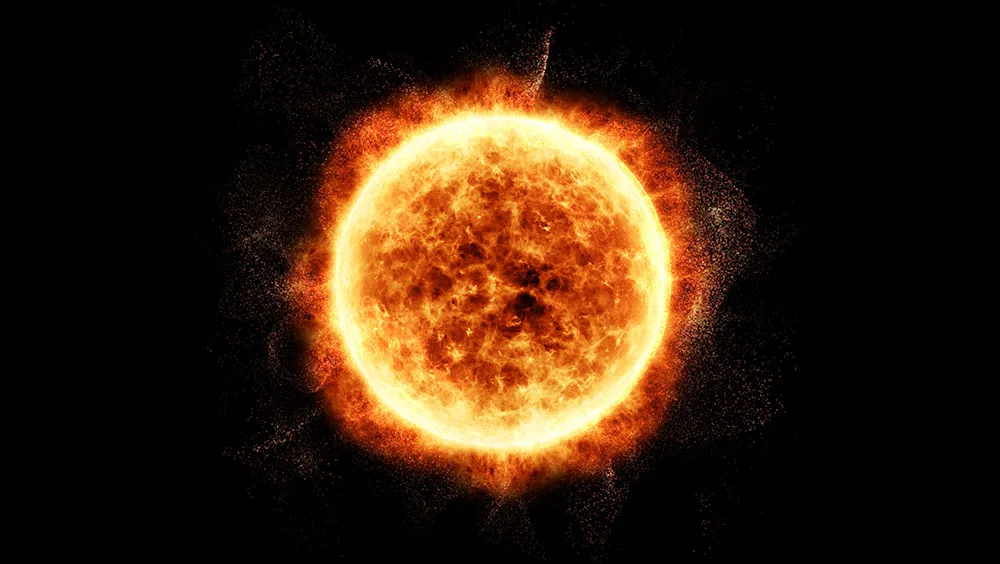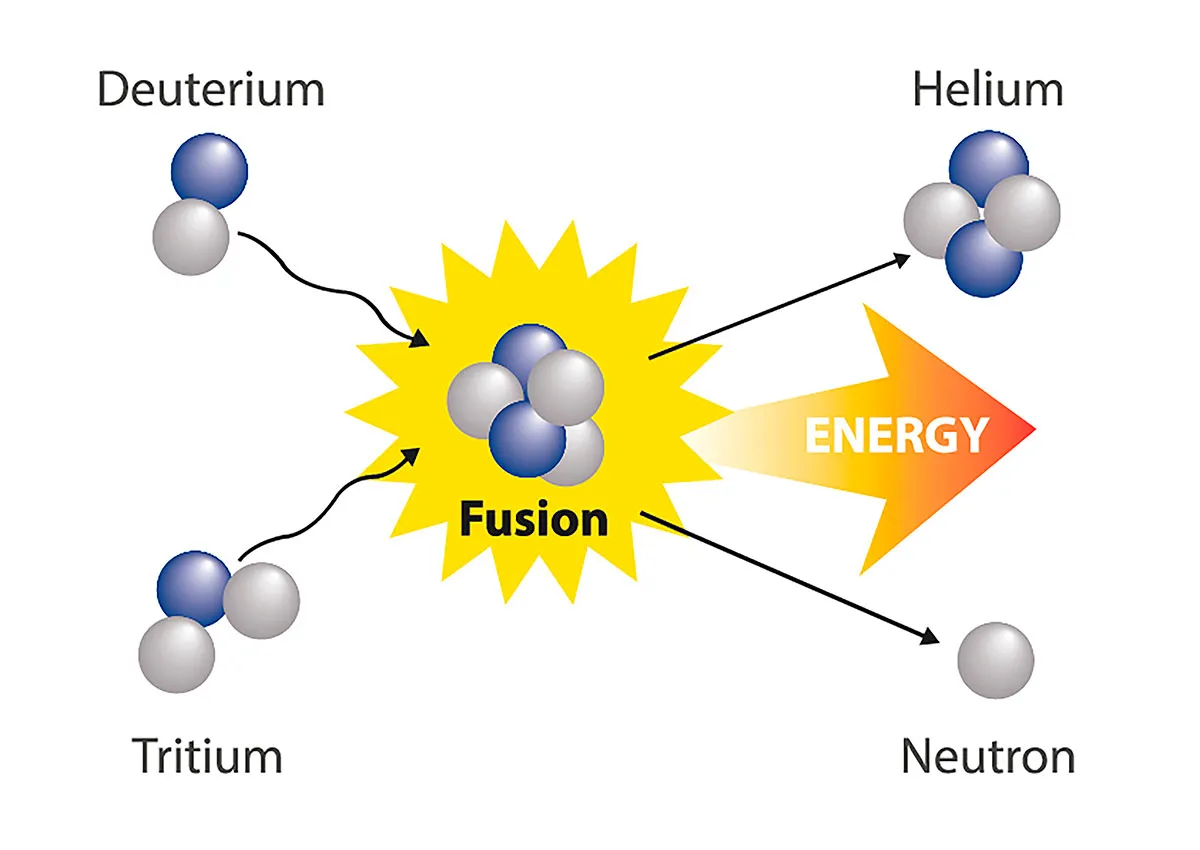Nuclear fusion is the process by which stars, including the Sun, generate their energy. In a fusion reaction, atomic nuclei ‘fuse’ together to form heavier nuclei. For this to happen, the nuclei need to have enough energy to overcome the repulsive force they experience because they are both positively charged. They also need a good chance of colliding with each other in the first place.
These conditions of extremely high pressure and temperature can be found in the cores of stars. The pressure at the centre of the Sun, for example, is a staggering 100 billion times atmospheric pressure while the temperature is a whopping 15,000,000°C.

Under these conditions, the fusion of hydrogen into helium can easily be sustained. In a fusion reaction, the resultant nucleus (if it is lighter than iron) has a slightly smaller mass than the nuclei that combined to form it. That excess mass is released as energy, and it is that energy that powers the stars.
Fusion reactions are different to the ‘fission’ reactions which power nuclear power stations. There, heavy and unstable atoms are split apart to produce energy (and radioactive by-products too).
In contrast, fusion power could supply a clean, efficient and unlimited source of energy; it would require only water as a fuel (or lithium) and would produce only inert, non-toxic helium gas as a by-product.

The trouble is that initiating, containing, and sustaining nuclear fusion reactions offer significant engineering challenges. There are many research institutions working on the problem worldwide.
Recently, a laboratory in China achieved a fusion temperature of about 70,000,000°C for over 17 minutes – a fantastic achievement, but still some way off from being a commercial source of energy. Even so, scientists estimate that nuclear fusion energy will become commonplace by the second half of this century.
Read more:
- Why do both fission and fusion release energy?
- Why does the fusion of hydrogen in stars release energy?
- Who really discovered nuclear fission?
- If the Sun is constantly losing mass via nuclear fusion, how come it’s not getting any smaller?
Asked by: Mark Brown, Ipswich
To submit your questions email us at questions@sciencefocus.com (don't forget to include your name and location)

